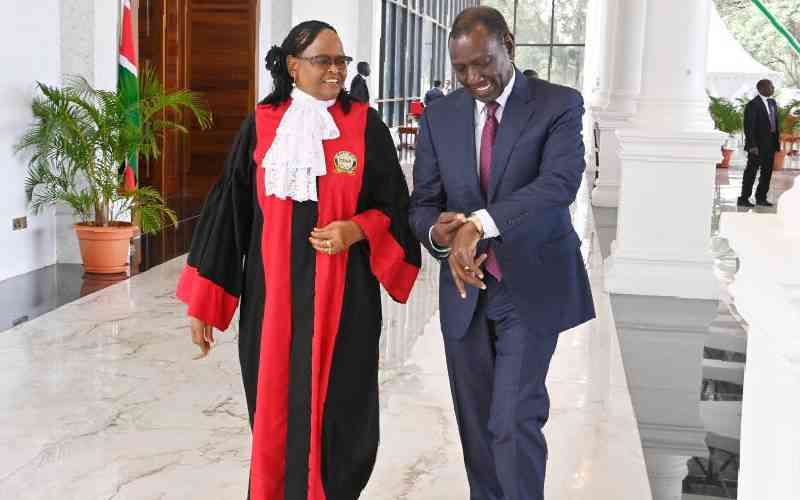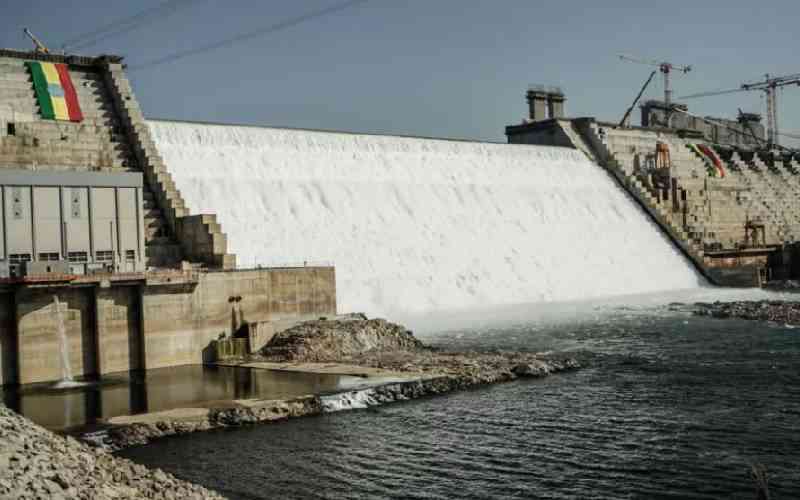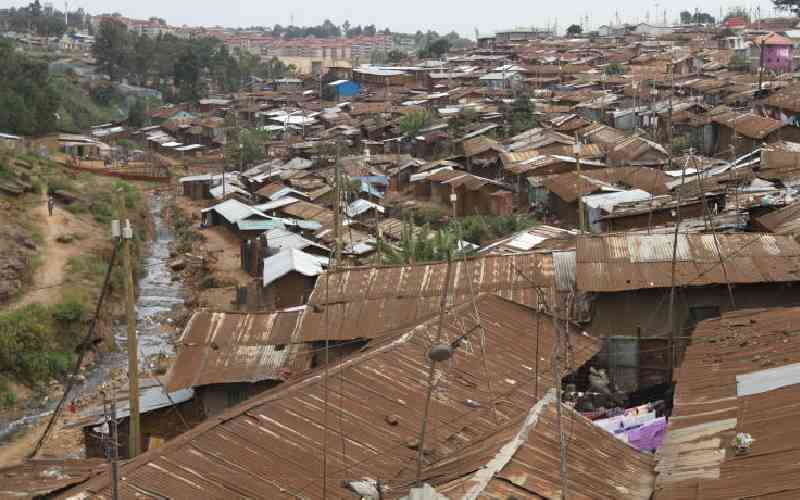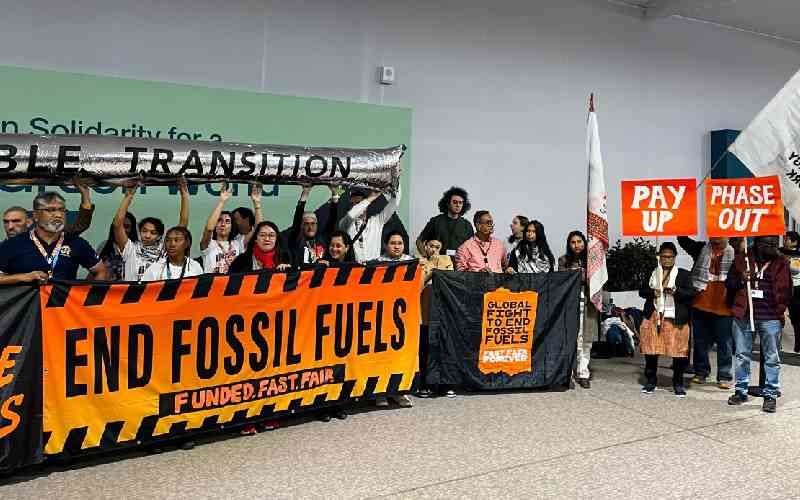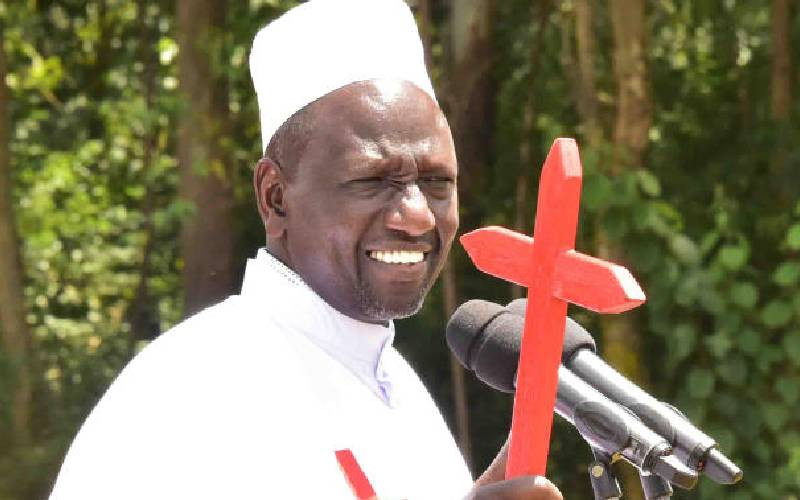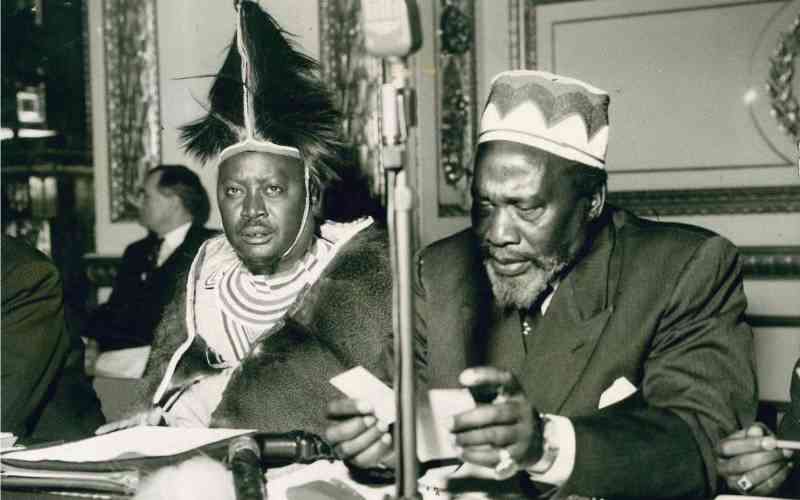By Osinde Obare, Isaiah Lucheli and Vincent Bartoo
Lake Turkana’s clear waters emerge like a glassy screen, breaking through the rugged rocks and dry earth that precede its approach.
This most northerly of Kenya’s lakes, on the border with Ethiopia, formerly known as Lake Rudolf and referred to as the ‘Jade Sea’, brings life to its dry surroundings like an oasis in the desert.
But Lake Turkana, slightly salty and alkaline and abounding in 40 fish species, faces a severe threat from across the border in Ethiopia.
 |
Fishermen prepare their catch. [PHOTOS: PETER OCHIENG/STANDARD] |
Turkana politicians led by Mr Christopher Nakuleu, an East African Legislative Assembly MP, said in a joint statement that the Turkana, Rendile, Dassanch, Elmolo and Gabbra, who depend on the lake for food and water, would be affected.
"It is recognised that any interference with the Lake Turkana ecosystem could be catastrophic, but no effort has been made to avert disaster," says Pius Ewoton, the Executive Director of Arid Lands Integrated Programme.
He says since the start of the dam project on River Omo in 2006, the water levels have dropped by eight metres.
Mr Ewoton says Kenyan and Ethiopia’s governments approved the programme in total disregard of Environmental Impact Assessment (EIA) reports.
Since August 2006, Kenya has been negotiating with Ethiopia for a power supply deal.
Ethiopia has a total power demand of about 400 MW against a production capacity of more than 1,875 MW.
Already, a memorandum of understanding, which also involves KenGen, has been signed with the Ethiopian Electric Power Corporation.
Feasibility studies
While the African Development Bank has provided Sh68 million for the project’s feasibility study, EEPCO needs Sh51 billion to export power to Kenya. Djibouti and Sudan will also benefit. Project designing is under way. It will take another three years to complete interconnection.
Stay informed. Subscribe to our newsletter
The Turkana leaders said while a power purchase agreement outlining the terms of electricity sale was reportedly signed between Ethiopia and Kenya in 2006, there are no bilateral agreements on the use of the Omo-Turkana waterway and the dam’s downstream effects to Kenya.
The leaders claim that an EIA submitted to donors for funding of the damming project was ‘incredibly sloppy’.
"Shockingly, it does not even mention that RiverOmo supplies 80 per cent of Lake Turkana waters. It suggests that the dam will regulate the natural flooding cycle of the Omo, eliminating the seasonal floods critical to downstream farmers," said Nakuleu.
The leaders are now urging President Kibaki to intervene and save the Turkana ecosystem and way of life.
During a visit to the area two weeks ago, Fisheries Minister Paul Otuoma said the Government was holding talks with Ethiopia on the matter. He said a Kenyan delegation had visited the neighbouring country and held negotiations.
The Ethiopian authorities, quoted by the BBC, maintain they are building the Gilgel Gibe III hydroelectricity dam — the second largest in sub-Saharan Africa — to solve a regional energy crisis.
 The Standard Group Plc is a
multi-media organization with investments in media platforms spanning newspaper
print operations, television, radio broadcasting, digital and online services. The
Standard Group is recognized as a leading multi-media house in Kenya with a key
influence in matters of national and international interest.
The Standard Group Plc is a
multi-media organization with investments in media platforms spanning newspaper
print operations, television, radio broadcasting, digital and online services. The
Standard Group is recognized as a leading multi-media house in Kenya with a key
influence in matters of national and international interest.
 The Standard Group Plc is a
multi-media organization with investments in media platforms spanning newspaper
print operations, television, radio broadcasting, digital and online services. The
Standard Group is recognized as a leading multi-media house in Kenya with a key
influence in matters of national and international interest.
The Standard Group Plc is a
multi-media organization with investments in media platforms spanning newspaper
print operations, television, radio broadcasting, digital and online services. The
Standard Group is recognized as a leading multi-media house in Kenya with a key
influence in matters of national and international interest.



